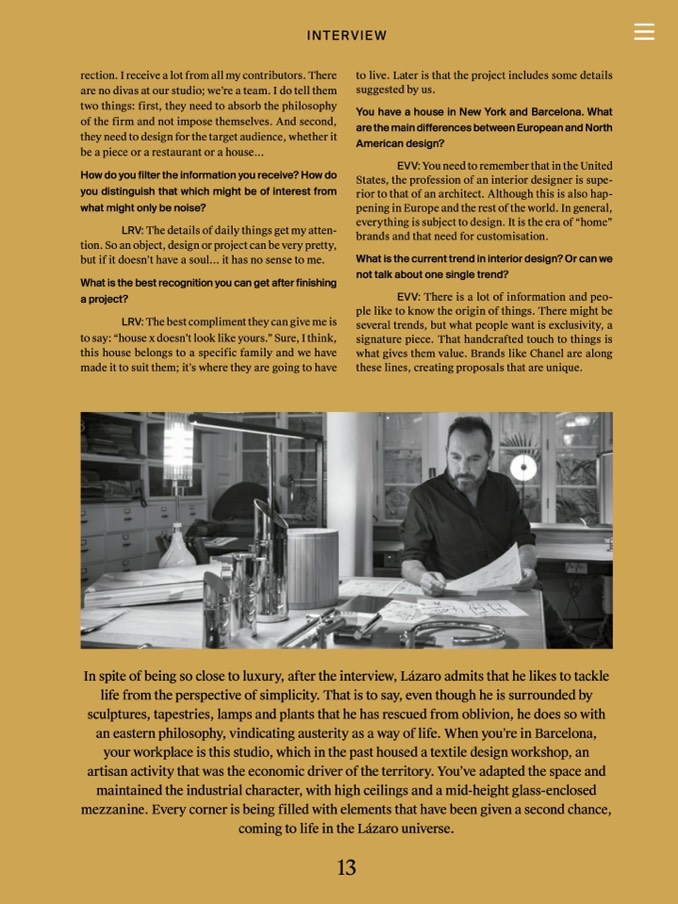
INTERVIEW
rection. I receive a lot from all my contributors. There
are no divas at our studio; we’re a team. I do tell them
two things: first, they need to absorb the philosophy
of the firm and not impose themselves. And second,
they need to design for the target audience, whether it
be a piece or a restaurant or a house...
How do you filter the information you receive? How do
you distinguish that which might be of interest from
what might only be noise?
LRV: The details of daily things get my atten-
tion. So an object, design or project can be very pretty,
but if it doesn’t have a soul... it has no sense to me.
What is the best recognition you can get after finishing
a project?
LRV: The best compliment they can give me is
to say: “house x doesn’t look like yours.” Sure, I think,
this house belongs to a specific family and we have
made it to suit them; it’s where they are going to have
to live. Later is that the project includes some details
suggested by us.
You have a house in New York and Barcelona. What
are the main differences between European and North
American design?
EVV: You need to remember that in the United
States, the profession of an interior designer is supe-
rior to that of an architect. Although this is also hap-
pening in Europe and the rest of the world. In general,
everything is subject to design. It is the era of “home”
brands and that need for customisation.
What is the current trend in interior design? Or can we
not talk about one single trend?
EVV: There is a lot of information and peo-
ple like to know the origin of things. There might be
several trends, but what people want is exclusivity, a
signature piece. That handcrafted touch to things is
what gives them value. Brands like Chanel are along
these lines, creating proposals that are unique.
In spite of being so close to luxury, after the interview, Lázaro admits that he likes to tackle
life from the perspective of simplicity. That is to say, even though he is surrounded by
sculptures, tapestries, lamps and plants that he has rescued from oblivion, he does so with
an eastern philosophy, vindicating austerity as a way of life. When you’re in Barcelona,
your workplace is this studio, which in the past housed a textile design workshop, an
artisan activity that was the economic driver of the territory. You’ve adapted the space and
maintained the industrial character, with high ceilings and a mid-height glass-enclosed
mezzanine. Every corner is being filled with elements that have been given a second chance,
coming to life in the Lázaro universe.
13

